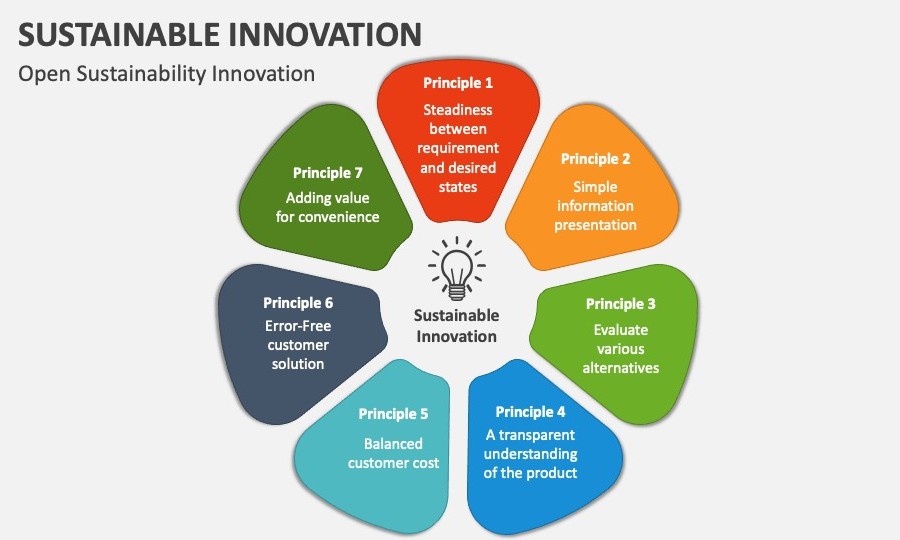Sustainable Innovation: Principles for a Smarter and Greener Future
How forward-thinking companies are creating solutions that benefit people, planet, and profit.
1. Steadiness Between Requirements and Desired States
Innovation must maintain a balance between what is needed and what is achievable. Overpromising and underdelivering erode trust. Sustainable innovation ensures steady progress—meeting current needs while aligning with long-term sustainability goals.
2. Simplicity in Information Presentation
Clarity drives action. Sustainable solutions should be easy to understand and communicate. Simplifying data and presenting it in an accessible way helps stakeholders—from customers to decision-makers—grasp the value and purpose of innovation.
3. Evaluation of Multiple Alternatives
Before settling on a single idea, evaluating different options helps identify the most efficient, cost-effective, and environmentally friendly solution. Comparing alternatives fosters creativity and ensures that sustainability is integrated into every design choice.
4. Transparent Understanding of the Product
Transparency builds credibility. When innovators clearly communicate how a product is made, used, and disposed of, it encourages responsible consumption and trust among consumers. Transparency is the cornerstone of ethical innovation.
5. Balanced Customer Cost
Affordability and sustainability should coexist. A balanced cost structure ensures that eco-friendly products and services are accessible to a wider audience, driving adoption and impact without creating economic inequality.
6. Error-Free Customer Solutions
Quality is sustainability’s silent partner. Minimizing errors in design, production, and delivery reduces waste, saves resources, and enhances customer satisfaction. Continuous improvement and feedback loops are key to error-free innovation.
7. Adding Value for Convenience
Convenience influences behavior. By designing sustainable products that add value and simplify users’ lives, innovators can encourage people to make greener choices without compromising comfort or usability.
8. Collaboration Fuels Sustainable Innovation
Open sustainability innovation thrives on collaboration. Partnerships between industries, academia, and governments can accelerate progress by pooling resources, sharing ideas, and fostering collective responsibility.
9. Lifecycle Thinking is Key
Sustainable innovation considers the entire lifecycle—from raw material sourcing to end-of-life disposal. Designing with circular economy principles in mind minimizes waste and maximizes value over time.
10. Measuring Impact for Continuous Growth
Innovation doesn’t end at product launch. Measuring environmental, social, and economic impact helps organizations refine strategies and ensure that sustainability goals are consistently met.

Leave a Comment